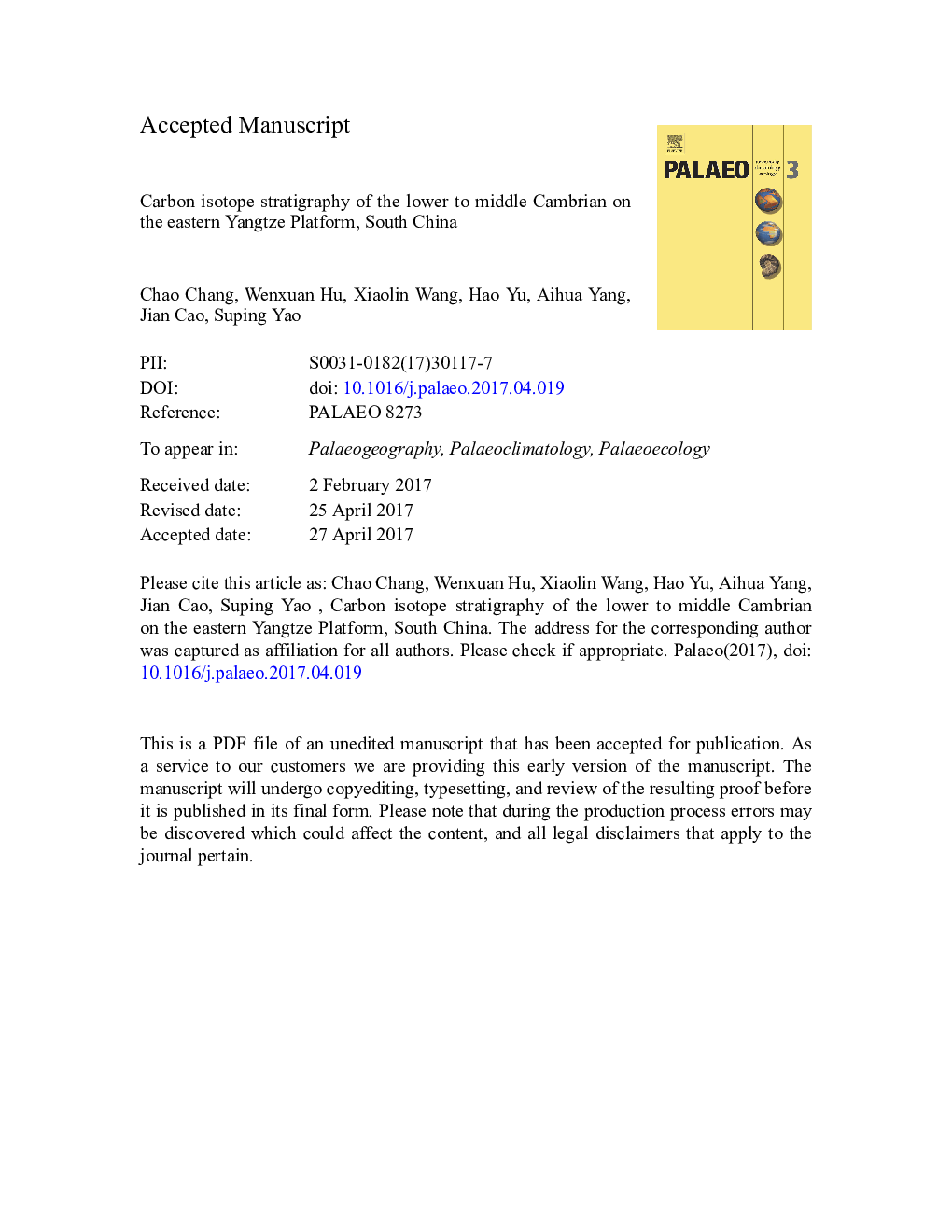| کد مقاله | کد نشریه | سال انتشار | مقاله انگلیسی | نسخه تمام متن |
|---|---|---|---|---|
| 5755846 | 1622113 | 2017 | 41 صفحه PDF | دانلود رایگان |
عنوان انگلیسی مقاله ISI
Carbon isotope stratigraphy of the lower to middle Cambrian on the eastern Yangtze Platform, South China
ترجمه فارسی عنوان
چینه شناسی ایزوتوپ کربن کمبریج پایین تر به وسط در پلت فرم یانگ تسه شرقی، جنوب چین
دانلود مقاله + سفارش ترجمه
دانلود مقاله ISI انگلیسی
رایگان برای ایرانیان
کلمات کلیدی
موضوعات مرتبط
مهندسی و علوم پایه
علوم زمین و سیارات
فرآیندهای سطح زمین
چکیده انگلیسی
During the Cambrian Series 2 to 3, vast areas of carbonate strata were deposited on the Yangtze Platform, South China, providing excellent materials for carbon isotope stratigraphic studies. Previous studies have revealed the stratigraphic framework of the carbonate strata in the western Yangtze Platform, yet little remains known about the carbon isotope signature of the strata in the eastern Yangtze Platform. High-resolution carbon isotope curves of the Well K2 and Well WN2 drilling sections that cover the traditional Lower-Middle Cambrian boundary in the eastern Yangtze Platform are reported in this study. One positive (M1) and two negative (M2 and M3) δ13C excursions can be recognized in the Mufushan Formation of the Well K2 section, whereas three negative δ13C excursions (D1, D2, and D3) are found in the Dachenling Formation of the Well WN2 section. Combined with palaeontological constraints, the M1 excursion, M2 and D1 excursions, and M3 and D3 excursions are correlated with the MICE (MIngxinsi Carb on Isotope Excursion), AECE (Archaeocyathid Extinction Carbon isotope Excursion), and ROECE (Redlichiid-Olenellid Extinction Carbon isotope Excursion) on the generalized global δ13C curve through the Cambrian. The M1 excursion is accompanied by high total organic carbon contents, indicating that it was caused by high primary productivity. In contrast, the M2, D1, and D3 excursions all coincide with lithological changes implying increased seawater depth, which supports a possible cause for the decreased δ13C by transgression and the introduction of δ13C-depleted deep seawater into shallower seas. Evident differences in δ13C values and amplitudes of the AECE and ROECE can be recognized between the Well K2 and Well WN2 sections, revealing the existence of a shallow-to-deep ocean δ13C gradient during the carbon isotope excursion events. To our knowledge, this is the first report of high-resolution δ13C curves of the strata in the eastern Yangtze Platform, and the δ13C curve of the Mufushan Formation is currently the most complete δ13C record of Cambrian Stage 4 reported for the Yangtze Platform. Our results complement the δ13C dataset for the Yangtze Platform and provide a better understanding of the origin of the δ13C excursions during this stage.
ناشر
Database: Elsevier - ScienceDirect (ساینس دایرکت)
Journal: Palaeogeography, Palaeoclimatology, Palaeoecology - Volume 479, 1 August 2017, Pages 90-101
Journal: Palaeogeography, Palaeoclimatology, Palaeoecology - Volume 479, 1 August 2017, Pages 90-101
نویسندگان
Chang Chao, Hu Wenxuan, Wang Xiaolin, Yu Hao, Yang Aihua, Cao Jian, Yao Suping,
